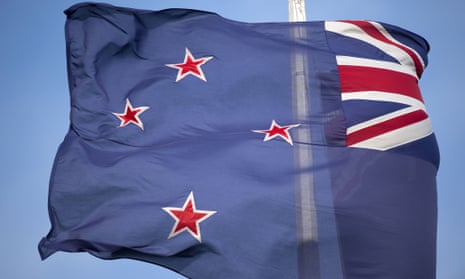New Zealand will hold a binding referendum in 2016 on changing the national flag, with the prime minister, John Key, hoping to drop the British union jack design in favour of a silver fern.
Key announced a schedule on Wednesday for New Zealanders to vote on the contentious issue, saying it was time for the former British colony to adopt a flag that was more recognisably Kiwi after more than a century with the existing banner.
“Our flag is the most important symbol of our national identity and I believe that this is the right time for New Zealanders to consider changing the design to one that better reflects our status as a modern, independent nation,” he said.
Key has previously said he would like to see a new flag featuring a silver fern on a black background, similar to the banner already used by many New Zealand teams such as the All Blacks national rugby union side.

The centre-right leader vowed to press on with plans for a change after convincingly winning a third term in a general election last month. He faces opposition from some quarters, such as veterans groups.
Key has put the chances of achieving change at “50-50” but opinion polls have shown most New Zealanders wanted to retain the existing flag.
A TVNZ survey in February this year found 72% were against change, with 28% in favour. Another poll by the New Zealand Herald in March put the figures at 52.6% against and 40.6% in favour, with the rest undecided.
The existing flag, with its four stars representing the southern cross constellation on a dark blue background and the union jack in the top left quarter, was first used in 1869 and formally adopted in 1902.
Its supporters said New Zealanders have fought and died under it for generations and a change would dishonour their memory.
Key has rejected the assertion, pointing out the headstones on many war graves bear the image of a fern, a symbol he said embodied New Zealand as strongly as the maple leaf represented Canada.
It has even been suggested by an Australian flag expert, Tom Burton, that Key’s preferred option, the fern on a black background, could be mistaken for the black-and-white banner of the Islamic State (Isis) organisation.
“A black flag doesn’t have good acceptance right now,” he told Fairfax New Zealand earlier this month.
Critics have argued the present flag is too easily confused with those of other former British colonies such as Australia’s.
The flag debate in Australia, where there have been periodic calls for a change, is closely linked to whether the country should become a republic.
In New Zealand, however, Key has successfully separated the issues, saying he remained a staunch monarchist and wanted to retain the Queen as the head of state even though he wanted a new national emblem.
He said the deputy prime minister, Bill English, would convene a cross-party committee covering the entire political spectrum to choose potential designs for a new flag.
The government would then hold a referendum in 2015, allowing the public to choose a preferred option from the range selected by the committee.
A second referendum is then planned for 2016, when voters will choose between the existing flag and the new design.
“Retaining the current flag is a possible outcome of this process and the consideration of options will be done carefully, respectfully and with no presumption in favour of change,” Key said.

Comments (…)
Sign in or create your Guardian account to join the discussion